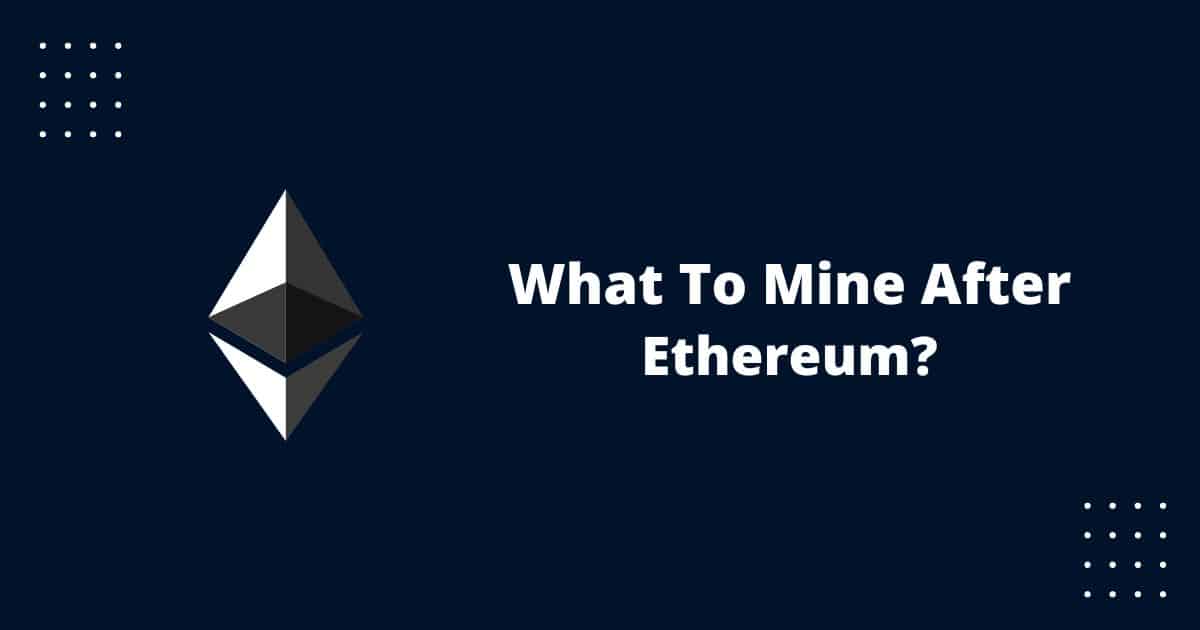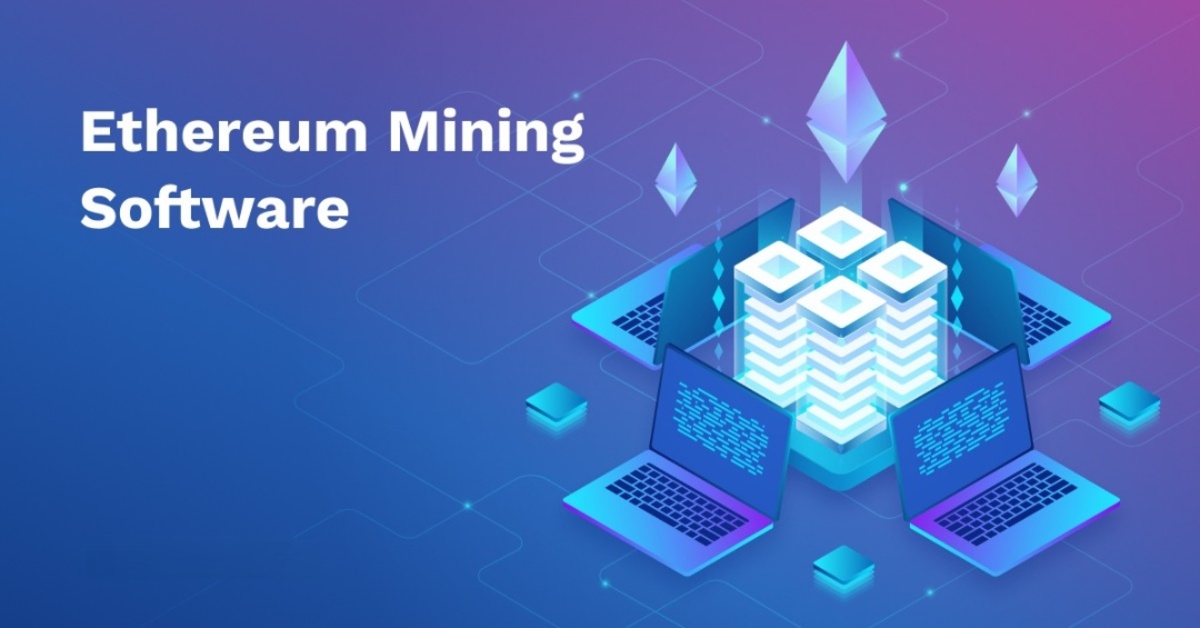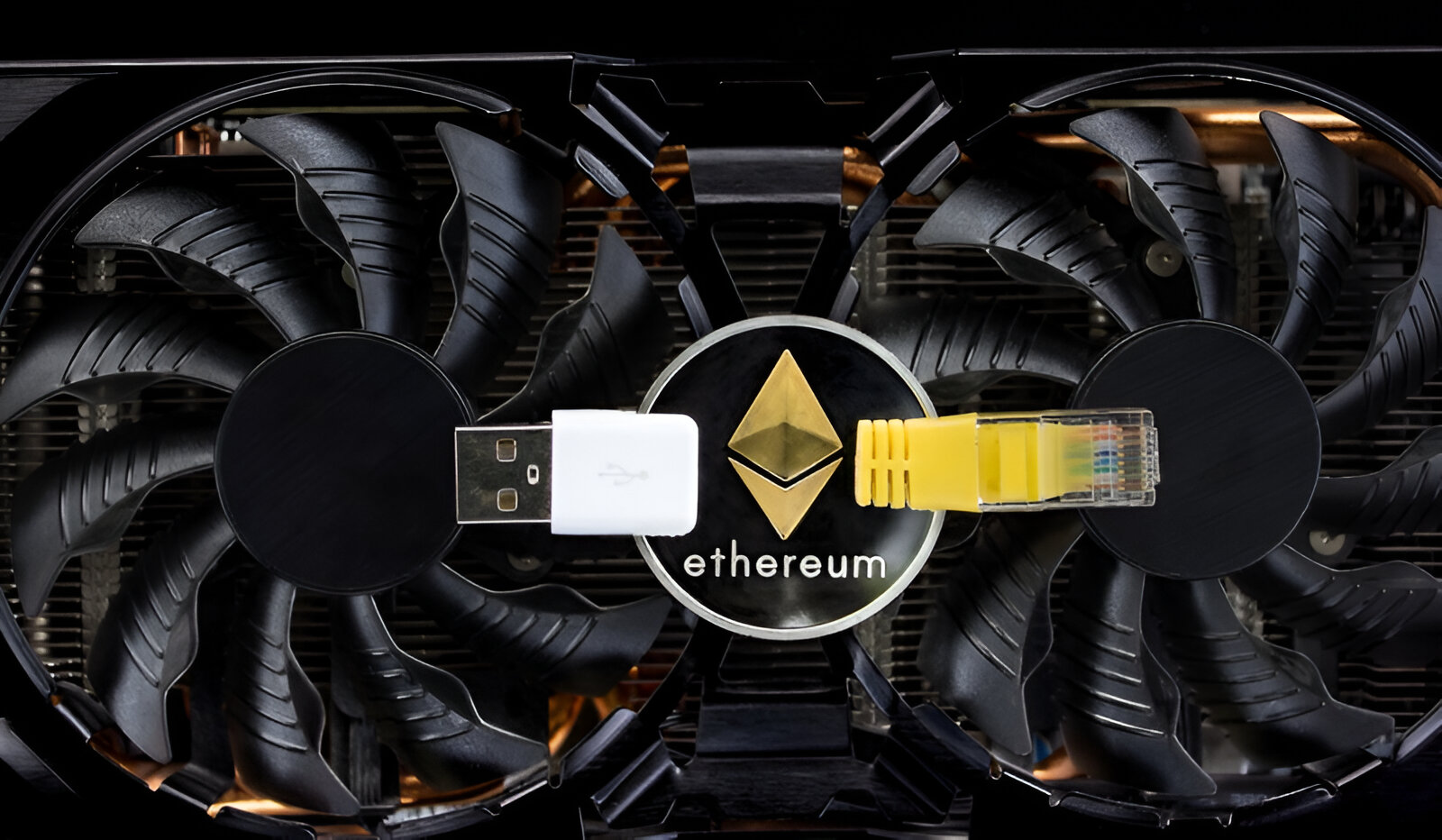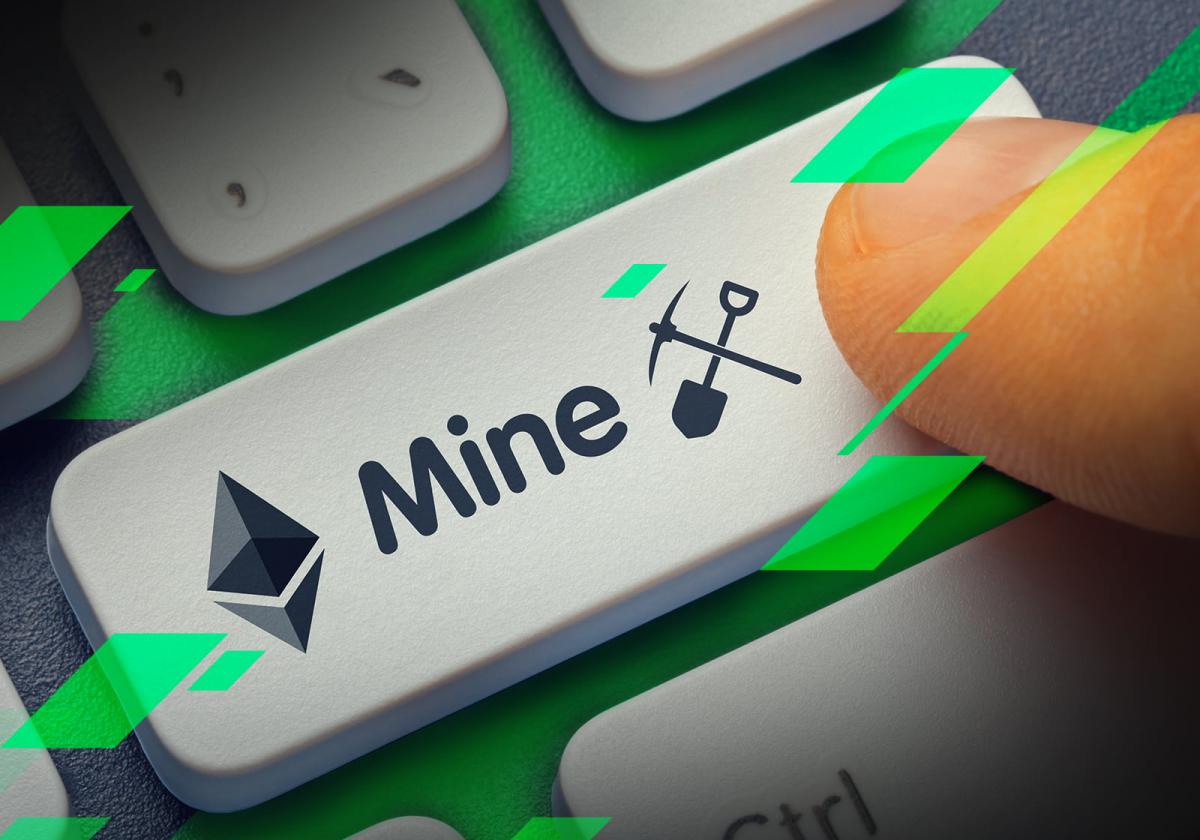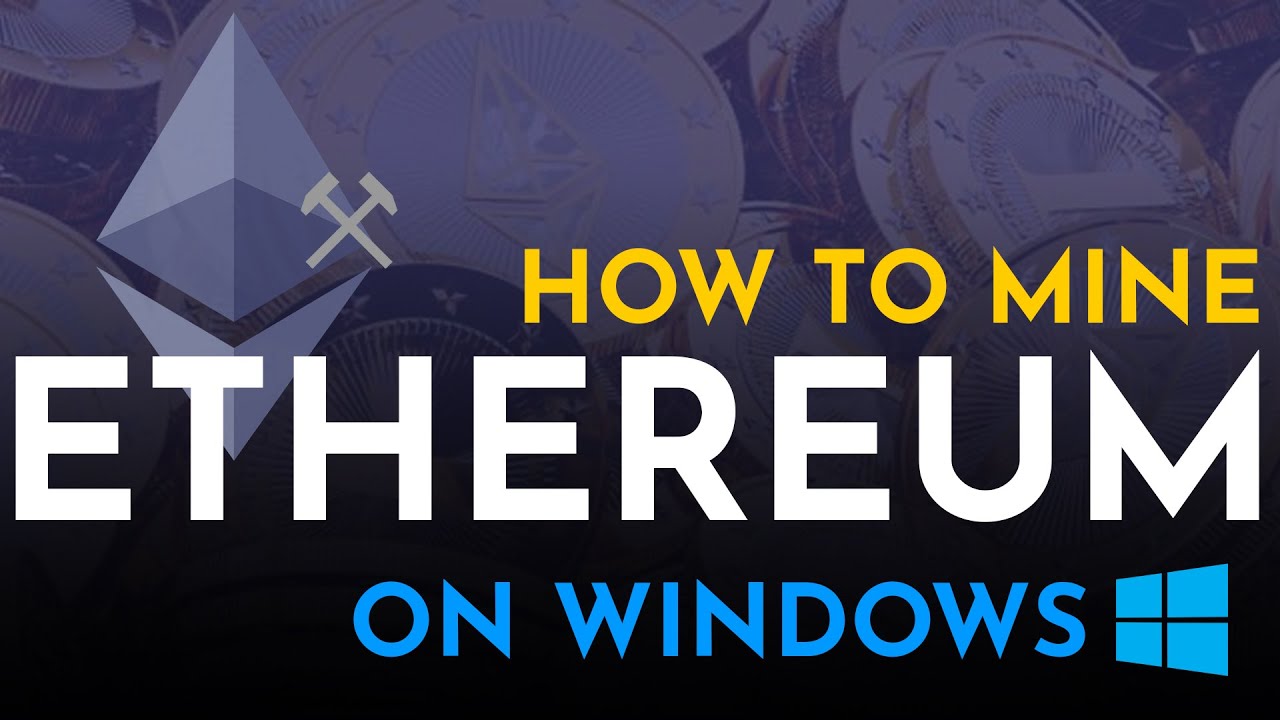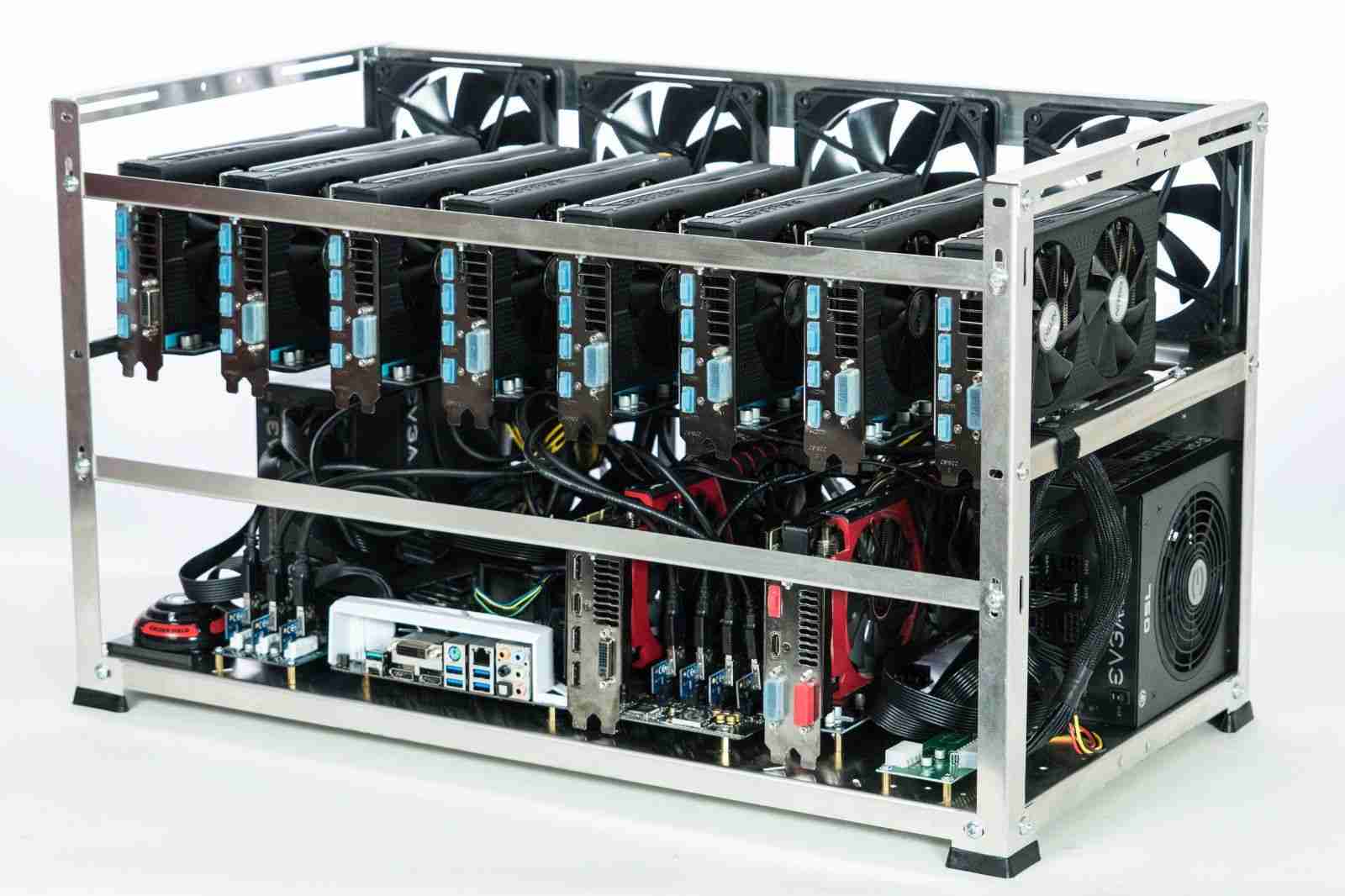Introduction
Welcome to the world of cryptocurrency mining! If you’ve been mining Ethereum for a while now and are looking to expand your mining activities, you’re in the right place. Ethereum has long been one of the most popular cryptocurrencies to mine due to its market value and potential for high returns. However, as the cryptocurrency landscape evolves, it’s important to explore alternative mining options to maximize your profits and stay ahead of the game.
Before we dive into the alternatives, let’s briefly touch upon what Ethereum mining is and its current state. Ethereum mining involves solving complex mathematical puzzles to validate and secure transactions on the Ethereum blockchain. Miners, armed with powerful computer systems, compete to find the solution and are rewarded with new Ethereum coins for their efforts.
The current state of Ethereum mining is ever-changing. With the increasing popularity of Ethereum and the rise in mining difficulty, it has become more challenging and resource-intensive to mine. The high energy consumption and the need for expensive hardware have made it less profitable for individual miners. Additionally, the planned shift to a proof-of-stake (PoS) consensus algorithm in Ethereum 2.0 further compounds the uncertainty and pushes miners to explore other cryptocurrencies.
Now that you understand the current landscape of Ethereum mining, let’s delve into the factors you should consider when choosing a new cryptocurrency to mine. With thousands of cryptocurrencies in existence, it can be overwhelming to determine which one is worth your time and resources. Don’t worry, we’ve got you covered. Keep reading to discover popular alternatives to Ethereum and their potential for profitable mining.
What is Ethereum Mining?
Ethereum mining is the process of validating and adding new transactions to the Ethereum blockchain. It involves solving complex mathematical puzzles using powerful computer hardware. Miners race against each other to find the solution and are rewarded with new Ethereum coins for their efforts.
At its core, Ethereum mining serves two main purposes: securing the network and issuing new Ether tokens. By participating in the mining process, miners help maintain the integrity and security of the Ethereum blockchain. They verify transactions, prevent double spending, and ensure that the network remains decentralized and resistant to censorship.
The Ethereum blockchain operates on a consensus algorithm called proof-of-work (PoW). This means that miners must perform a significant amount of computational work to validate transactions. The more computational power a miner has, the higher their chances of solving the puzzle and being rewarded with Ether.
To mine Ethereum, miners need specialized hardware known as mining rigs. These rigs consist of powerful graphics processing units (GPUs) or application-specific integrated circuits (ASICs). These devices are specifically designed to perform the complex calculations required for mining.
When a miner successfully solves the puzzle, they create a new block and add it to the blockchain. This block contains a collection of validated transactions. Miners also include a special transaction called the coinbase transaction, which rewards them with a certain number of Ether coins as an incentive for their work.
It’s important to note that Ethereum mining is an energy-intensive process. The hardware required consumes a significant amount of electricity, resulting in high operational costs. This is why mining profitability relies not only on the market value of Ether but also on the cost of electricity and the efficiency of the mining equipment.
In summary, Ethereum mining is the process of validating transactions and adding them to the Ethereum blockchain. Miners use specialized hardware to solve complex mathematical puzzles and are rewarded with new Ether coins. It plays a critical role in maintaining the security and decentralization of the Ethereum network.
The Current State of Ethereum Mining
As one of the most popular cryptocurrencies to mine, Ethereum has undergone significant changes in recent years, impacting the current state of Ethereum mining. It’s important to understand these changes to make informed decisions about your mining activities.
One of the major factors affecting Ethereum mining is the increasing mining difficulty. As more miners join the network, the competition to solve the mathematical puzzles becomes tougher. This results in higher computational requirements and increased energy consumption. Consequently, individual miners may find it more challenging to mine Ethereum profitably without significant investment in powerful mining rigs.
Another aspect to consider is the upcoming shift to Ethereum 2.0, which will transition the network from a proof-of-work (PoW) consensus algorithm to a proof-of-stake (PoS) algorithm. In PoS, block validators are chosen based on the number of coins they hold and are willing to “stake” as collateral. This change aims to enhance scalability and energy efficiency but will render traditional mining obsolete. Therefore, miners need to anticipate this shift and diversify their mining operations to alternative cryptocurrencies.
Furthermore, the rise in cryptocurrency prices and increased mainstream adoption have led to a surge in new mining participants. This influx has further exacerbated the competition and mining difficulty for Ethereum. While this boom can be seen as a positive sign for the overall market, it does present challenges for individual miners to stay profitable.
In response to these challenges, some miners have formed mining pools, which involve multiple miners combining their resources and sharing the rewards. This collective approach helps to increase the chances of solving the puzzles and earning more consistent rewards. Joining a mining pool can be a viable option for individual miners looking to mitigate the impact of increasing mining difficulty.
Ultimately, it’s crucial for miners to adapt to the evolving landscape of Ethereum mining. This involves staying informed about the latest developments, monitoring mining profitability, and exploring alternative cryptocurrencies that offer better mining opportunities.
In the next section, we will delve into popular alternatives to Ethereum that you can consider for your mining endeavors.
Factors to Consider When Choosing a New Cryptocurrency to Mine
When venturing into mining a new cryptocurrency, it’s essential to consider various factors to maximize your profitability and minimize risks. Let’s explore these factors to help you make an informed decision.
- Market Value: The market value of a cryptocurrency plays a crucial role in its mining profitability. Look for cryptocurrencies with a solid market value and a positive growth trend. Higher market value means more significant rewards for your mining efforts.
- Difficulty Level: Evaluate the mining difficulty of the cryptocurrency. A lower mining difficulty means easier puzzles to solve and a higher chance of earning rewards. Conversely, a high mining difficulty may make it harder to generate consistent profits.
- Mining Algorithm: Understand the mining algorithm used by the cryptocurrency. Different algorithms may require specific hardware or have varying levels of efficiency. Ensure that your mining equipment is compatible with the chosen cryptocurrency’s algorithm.
- Energy Consumption: Consider the energy consumption of the cryptocurrency’s mining process. Mining can be energy-intensive, and high electricity costs can eat into your profits. Look for cryptocurrencies that offer good mining returns while maintaining energy efficiency.
- Community and Development: Assess the strength of the cryptocurrency’s community and development team. An active and supportive community can facilitate knowledge sharing and provide valuable resources for mining. A strong development team ensures ongoing updates and improvements to the cryptocurrency.
- Blockchain Stability: Consider the stability and security of the cryptocurrency’s blockchain. Look for cryptocurrencies with a robust and reliable blockchain infrastructure to minimize the risk of security breaches or technical issues.
- Profitability Calculator: Utilize online profitability calculators to estimate potential earnings based on factors such as mining difficulty, energy costs, and current market value. This will help you evaluate the profitability of mining a particular cryptocurrency.
- Market Volatility: Take into account the volatility of the cryptocurrency market. Cryptocurrency prices can experience significant fluctuations, impacting your mining returns. Assess the historical price stability and future growth potential before committing to mining a new cryptocurrency.
By considering these factors, you can make a more informed decision when choosing a new cryptocurrency to mine. Remember to regularly monitor market trends and stay updated on the latest developments in the cryptocurrency world to adapt your mining strategy accordingly.
Now, let’s move on to explore popular alternatives to Ethereum that have potential for profitable mining.
Popular Alternatives to Ethereum
While Ethereum has been a go-to choice for miners, there are several other cryptocurrencies that offer profitable mining opportunities. Let’s explore some of the popular alternatives to Ethereum:
- Ravencoin: Ravencoin is a blockchain platform designed for asset transfers, decentralized applications, and token creation. Its mining algorithm, KAWPOW, is ASIC-resistant, making it accessible for GPU miners. With a strong community and active development, Ravencoin has gained popularity among miners looking for profitable alternatives.
- Monero: Monero is a privacy-focused cryptocurrency that utilizes the CryptoNight algorithm. It offers enhanced anonymity features, making it highly sought after for privacy-conscious miners. Monero’s mining difficulty is lower compared to Ethereum, providing opportunities for consistent returns.
- Zcash: Zcash is another privacy-centric cryptocurrency that enables shielded transactions. It uses the Equihash algorithm, which is GPU-friendly. Zcash offers a balance between privacy and transparency, making it appealing to miners interested in both aspects.
- Dash: Dash is a digital currency that focuses on instant and private transactions. It utilizes the X11 algorithm, which requires a combination of CPU and GPU power. Dash’s strong community support and innovative features make it an attractive choice for miners.
- Litecoin: Known as the “silver to Bitcoin’s gold,” Litecoin offers faster block generation times and a different hashing algorithm (Scrypt) compared to Bitcoin. With a strong reputation in the crypto space and relatively low mining difficulty, Litecoin remains a popular choice for miners.
- Ethereum Classic: A spin-off from Ethereum, Ethereum Classic still utilizes the original PoW consensus algorithm. While it may have a lower market value compared to Ethereum, it provides an opportunity for miners to continue mining with their existing Ethereum mining rigs.
These are just a few examples of the many alternative cryptocurrencies available for mining. It’s essential to research each cryptocurrency thoroughly, considering factors such as market value, mining difficulty, and community support. Additionally, diversifying your mining activities among different cryptocurrencies can help mitigate the risks and optimize your profitability.
Now that you have an idea of some popular alternatives to Ethereum, you can explore further and determine which cryptocurrency aligns with your mining goals and resources.
Ravencoin
Ravencoin is a blockchain platform that was specifically designed for asset transfers, decentralized applications, and token creation. It stands out as a popular alternative to Ethereum for miners seeking profitable opportunities. One of the key advantages of Ravencoin is its mining algorithm, known as KAWPOW, which is resistant to ASICs (Application-Specific Integrated Circuits). This means that mining Ravencoin can be accomplished using GPUs, making it more accessible to individual miners.
The community behind Ravencoin is vibrant and supportive, with active development and regular updates. This not only ensures the longevity and stability of the platform but also provides miners with a valuable network of resources and knowledge sharing. Ravencoin has gained popularity due to its focus on security, transparency, and simplicity, attracting both experienced and novice miners alike.
With Ravencoin’s growing market value and relatively lower mining difficulty compared to Ethereum, miners have the potential for consistent returns. It’s important to note, however, that like any cryptocurrency, the market value of Ravencoin can fluctuate. Keeping a close eye on market trends and adjusting mining strategies accordingly can help optimize profitability.
Another advantage of Ravencoin is its commitment to inclusivity and decentralization. The project aims to provide a fair and equal opportunity for all miners, without favoring large mining pools or specialized hardware. This commitment aligns with the decentralized nature of cryptocurrencies and attracts a wide range of miners who value these principles.
Diversifying your mining activities and including Ravencoin in your portfolio can offer a new avenue for profitability. However, as with any investment or mining venture, it’s important to perform thorough research, monitor market conditions, and consider factors such as electricity costs and mining equipment efficiency. Mining Ravencoin can be a rewarding and potentially profitable choice for those seeking alternatives to Ethereum.
Continue reading to explore more alternative cryptocurrencies that can potentially enhance your mining activities.
Monero
Monero is a popular cryptocurrency known for its strong focus on privacy and security. It offers a decentralized and private blockchain network, making it an appealing alternative to Ethereum for miners seeking increased anonymity. One of the key features of Monero is its mining algorithm, CryptoNight, which is ASIC-resistant. This means that mining can be done using regular CPUs and GPUs, providing an opportunity for individual miners to participate and earn rewards.
The privacy-centric nature of Monero sets it apart from other cryptocurrencies. It utilizes techniques such as ring signatures, stealth addresses, and confidential transactions to obfuscate transaction details and ensure the confidentiality of its users. This focus on privacy makes Monero highly sought after by individuals and businesses who value their financial privacy and security.
Another advantage of mining Monero is its relatively lower mining difficulty compared to Ethereum. With lower competition, miners have a higher chance of solving blocks and earning consistent rewards. Additionally, the Monero community is known for its strong support and active development, ensuring the ongoing improvement and innovation of the cryptocurrency.
It’s important to note that while Monero offers increased privacy, it adheres to all regulatory frameworks. Its commitment to strong privacy features does not compromise its compliance with legal obligations. This distinguishes Monero as a cryptocurrency that can appeal to a wide range of miners while maintaining a responsible approach.
Monitoring the market value of Monero is essential, as its profitability can be influenced by various factors including market conditions and mining difficulty. By staying informed about the latest developments and trends, miners can adapt their strategies to optimize their earnings.
Considering Monero as an alternative to Ethereum can broaden and diversify mining activities, especially for those who prioritize privacy and security. As with any mining venture, analyzing electricity costs, hardware efficiency, and staying knowledgeable about mining best practices are essential for achieving profitable results.
Now let’s move on to explore another promising alternative to Ethereum: Zcash.
Zcash
Zcash is a cryptocurrency that stands out for its focus on privacy and enhanced security. It offers users the option to conduct transparent transactions or utilize shielded transactions, which provide a higher level of privacy by encrypting the sender, recipient, and transaction amounts. This emphasis on privacy makes Zcash an attractive alternative to Ethereum for miners looking for increased anonymity.
One of the notable features of Zcash is its mining algorithm called Equihash. Equihash is a memory-oriented algorithm that favors GPUs over ASICs, making it accessible to individual miners. This ASIC-resistant nature ensures a more level playing field and allows for wider participation in mining Zcash. It also encourages decentralization, which aligns with the fundamental principles of cryptocurrencies.
The Zcash community is actively involved in the development and improvement of the cryptocurrency. Regular updates and innovations help maintain the security and efficiency of the network. Furthermore, Zcash has gained recognition and support from prominent organizations and individuals in the field of cryptography and privacy.
In terms of profitability, Zcash offers mining opportunities with a relatively lower difficulty compared to Ethereum. This lower mining difficulty, coupled with the increasing market value of Zcash, presents a potential for miners to earn consistent rewards. However, as with any investment or mining endeavor, it’s crucial to monitor market trends and adjust mining strategies accordingly to optimize profitability.
While Zcash places a strong emphasis on privacy, it remains committed to regulatory compliance. The cryptocurrency ensures that it adheres to legal requirements and promotes responsible use. This commitment makes Zcash an appealing choice for miners seeking both privacy and adherence to regulatory frameworks.
When considering mining Zcash, it’s important to factor in electricity costs, mining equipment efficiency, and market conditions. Engaging in thorough research and staying informed about the latest developments in Zcash’s ecosystem can contribute to successful mining operations.
Diversifying mining activities by including Zcash as an alternative to Ethereum can provide miners with new opportunities for profitability. Its focus on privacy, active community, and GPU-friendly mining algorithm make Zcash a compelling choice for miners looking to explore different avenues within the cryptocurrency mining landscape.
Next up, we will explore another alternative to Ethereum: Dash.
Dash
Dash is a popular cryptocurrency that focuses on instant and private transactions. Originally launched as “Darkcoin” in 2014, it rebranded to Dash, which stands for “Digital Cash.” Dash offers a unique proposition as an alternative to Ethereum, providing a fast, secure, and private way to conduct transactions.
One of the key features of Dash is its innovative governance system. Dash operates on a decentralized autonomous organization (DAO) model, where network participants can submit and vote on proposals for the development and improvement of the platform. This governance structure ensures that the Dash network evolves based on the consensus and needs of its community.
Dash utilizes the X11 algorithm for its mining, which incorporates a combination of eleven cryptographic algorithms. This algorithm requires specialized mining hardware, including both CPUs and GPUs, making it accessible for miners with a range of equipment. The X11 algorithm also has the advantage of being energy-efficient, reducing the operational costs associated with mining.
As a miner, participating in the Dash network provides the opportunity to earn both block rewards and rewards from the network’s governance system. Miners can submit and vote on proposals, contributing to the decision-making process and earning additional income for their involvement in improving the Dash ecosystem.
The Dash community is known for its strong support and adoption, both from individuals and businesses. Its ecosystem includes a wide range of services and applications, allowing users to use Dash for various purposes beyond simple transactions.
When considering Dash as an alternative to Ethereum, it’s important to monitor its market value and mining difficulty. Dash has established itself as one of the leading cryptocurrencies in terms of market capitalization, but like any cryptocurrency, its value can fluctuate based on market conditions. Additionally, keeping an eye on the mining difficulty will help determine the potential profitability of mining Dash.
By diversifying their mining activities and considering Dash as an alternative to Ethereum, miners can explore new opportunities for profitability. The combination of fast transactions, strong community support, and the innovative governance structure makes Dash an intriguing choice for those looking to expand their mining portfolio.
Next, let’s explore another popular alternative to Ethereum: Litecoin.
Litecoin
Litecoin, often referred to as the “silver to Bitcoin’s gold,” is a well-established cryptocurrency that offers several advantages as an alternative to Ethereum. Created by Charlie Lee in 2011, Litecoin was designed to address some of the limitations of Bitcoin, such as transaction confirmation speed and scalability.
Litecoin operates on the Scrypt hashing algorithm, which differs from Bitcoin’s SHA-256 algorithm. The Scrypt algorithm favors memory and performance-conscious mining, making it more accessible to individual miners who do not possess specialized mining hardware. This GPU-friendly algorithm allows a broader range of miners to participate and earn rewards.
One of the notable advantages of Litecoin is its faster block generation time compared to Bitcoin. Litecoin’s block time is approximately 2.5 minutes, resulting in quicker transaction confirmations. This faster block time enhances transaction speed and promotes a smoother user experience.
In terms of market value and acceptance, Litecoin has established itself as a reputable cryptocurrency. It has gained recognition as a widely accepted form of payment and is supported by numerous online vendors and businesses. Its strong reputation and widespread adoption contribute to the liquidity and potential profitability of mining Litecoin.
Litecoin’s mining difficulty is typically lower compared to Bitcoin and Ethereum. This lower difficulty level can be advantageous for individual miners aiming for more consistent mining rewards. However, it’s important to note that the mining landscape is dynamic, and monitoring market conditions and mining difficulty is essential to optimize profitability.
Litecoin also benefits from its close association with Bitcoin. They share several similarities, including the underlying technology and development principles. As a result, improvements made in Bitcoin technology, such as the integration of the Lightning Network or Segregated Witness (SegWit), can be applied to Litecoin as well.
As with any cryptocurrency, it’s crucial to consider the overall market conditions, electricity costs, and mining equipment efficiency when evaluating the profitability of mining Litecoin. However, its established reputation, faster block time, and accessibility make Litecoin an intriguing alternative to Ethereum for miners seeking potential profitability and a solid investment opportunity.
Now that we’ve explored Litecoin, let’s move on to another alternative: Ethereum Classic.
Ethereum Classic
Ethereum Classic (ETC) is a spin-off from the original Ethereum blockchain. It came into existence after a contentious hard fork in 2016, when the Ethereum community split due to a disagreement regarding a major hack and subsequent actions taken to recover the stolen funds.
Ethereum Classic retains the original principles and features of Ethereum, including the proof-of-work (PoW) consensus algorithm. This means that mining Ethereum Classic is similar to mining Ethereum before its transition to Ethereum 2.0. Miners can use the same mining equipment they previously used for Ethereum, making Ethereum Classic an attractive option for those who wish to optimize their existing mining rigs.
With Ethereum Classic, miners have the opportunity to participate in securing the network, validating transactions, and earning block rewards in the form of ETC coins. The rewards are distributed to miners who successfully solve the mathematical puzzles required to add new blocks to the blockchain.
One advantage of mining Ethereum Classic lies in its established market value. It continues to be recognized as a prominent cryptocurrency and is actively traded on various exchanges, providing liquidity and potentially profitable market conditions for miners.
It’s worth noting that while Ethereum Classic shares similarities with Ethereum, it has a smaller community and ecosystem. However, this can be seen as an advantage for miners who prefer less competition and potentially higher mining rewards.
When mining Ethereum Classic, it’s important to stay informed about any updates or developments in the ecosystem. This enables miners to adapt their strategies and navigate any potential changes that may impact mining profitability.
As with any form of mining, it’s crucial to consider factors such as electricity costs, hardware efficiency, and overall market conditions. Analyzing these elements can help miners make informed decisions and maximize their earnings in the Ethereum Classic mining venture.
By considering Ethereum Classic as an alternative to Ethereum, miners can leverage their existing mining equipment while participating in a well-established cryptocurrency ecosystem. This allows for potential profitability and tapping into a loyal community that embraces the principles of the original Ethereum blockchain.
Now that we’ve explored Ethereum Classic, let’s summarize the information and draw some key takeaways.
Conclusion
In this article, we have explored several popular alternatives to Ethereum for miners looking to expand their mining activities. These alternative cryptocurrencies offer unique features, mining algorithms, and potential profitability.
We began by understanding the current state of Ethereum mining, considering factors such as mining difficulty, energy consumption, and the upcoming shift to Ethereum 2.0. We then discussed the essential factors to consider when choosing a new cryptocurrency to mine, including market value, mining algorithm, and blockchain stability.
We explored six popular alternatives to Ethereum: Ravencoin, Monero, Zcash, Dash, Litecoin, and Ethereum Classic. Each of these cryptocurrencies presents unique opportunities for miners, whether through their mining algorithms, emphasis on privacy and security, or established reputations within the crypto space.
By diversifying mining activities and exploring these alternatives, miners can optimize their profitability and adapt to the evolving landscape of cryptocurrency mining.
It’s important for miners to carefully evaluate market conditions, electricity costs, and mining equipment efficiency to make informed decisions and achieve profitable mining operations. Additionally, staying updated with the latest developments in each cryptocurrency’s ecosystem is essential to navigate potential changes and seize opportunities.
We hope that this article has provided valuable insights into alternative cryptocurrencies for mining and has sparked further exploration into the vast world of cryptocurrency mining. As the landscape continues to evolve, it is essential for miners to remain adaptable and open to new opportunities.
Happy mining!







